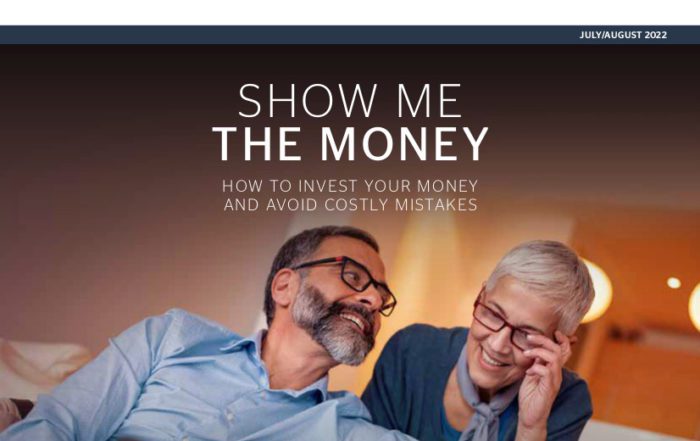Are you making the most of your tax allowances?
In our experience, most people don’t claim all the tax allowances they are entitled to. Some may be aware of one or two they can claim, but there are very few who have everything covered.
In fact, Age UK identified ten common mistakes that people make when it comes to allowances. These included not checking tax codes, not telling HMRC when your working hours change or if you’re about to retire, and not claiming back overpaid tax. But the two most common mistakes that were identified included individuals not claiming allowances they’re entitled to and couples not combining their allowances effectively.

So, if you want to make sure you’re claiming everything you’re entitled to, what should you look at? Here are some of the more common areas:
Personal allowances
This is the amount of income – including income from pensions or savings – that you can receive before you pay any income tax. For the 2021/22 tax year, it stands at £12,570 if you earn below £100,000 a year. Above this, your personal allowance goes down by £1 for every £2 you earn, so if you earn over £125,140 it’s zero.
You can’t carry this forward to the following tax year, so you should look at ways to use it all in this one. For example, if you’re married or in a civil partnership and own your own business, you could employ your spouse or partner. If you keep their income below £12,570, this will double your tax-free income as a couple.
Also, if you’re not receiving the maximum personal allowance, letting HMRC know of any charities you are paying into or subscriptions to professional institutes, will help you reclaim some of your lost allowance.
Pensions are included in taxable income, so personal allowances apply when you draw your pension. You could reduce the tax you pay by drawing up to £12,570 from your pension and adding income from other tax-free sources such as savings or ISAs. Alternatively, depending on your pension fund, you may be able to retain some of your pension in a tax-efficient vehicle, or draw some of it as tax-free cash and combine it with taxable income up to your personal allowance. This depends on the flexibility of your pension and your personal circumstances, so we would always recommend talking to one of our advisers before making any decisions.
Marriage Allowance
If you’re married or in a civil partnership, a marriage allowance allows you, in certain circumstances, to transfer some of your personal allowance to your spouse or partner. This may mean you pay more tax yourself, but it should reduce your overall tax bill as a couple. If you were eligible for the allowance in the previous four tax years, you can backdate your claim to those, too. This is a useful way of gaining extra income, perhaps to increase your pension pot, save for a big event or pay for vital financial protection.
Dividend Allowance
If you hold any company shares, you only pay tax on dividend income of over £2,000, which depending on your tax band could amount to 7.5%, 32.5% or 38.1%. If you own a business, you should always make sure you pay yourself up to £2,000 in dividends each year. If you can employ a family member or partner and pay them up to £2,000 worth of dividends too, this could also reduce their tax bill.
ISAs
ISAs are an excellent way to gain tax-free income, particularly if you need access to funds before you retire, because you don’t pay tax on any interest, income or capital gains from investments in an ISA.
There are various types of ISA and it’s a good idea to invest in different ones each tax year, so you spread the risk. The maximum amount you can put into an ISA in the 2021/22 tax year is £20,000. As a couple, if you each invest this amount every year, you’ll soon build a healthy source of tax-free income.
The ISA market is crowded and providers have different charges and varying growth performance rates. It’s important to ask an independent adviser for advice before you invest in an ISA to minimise any risk and ensure you’re getting value for money.
Tax efficient share investment schemes
The government’s Enterprise Investment Scheme (EIS) and Seed Enterprise Investment Scheme (SEIS) are designed to help smaller, high risk companies raise finance by selling shares. If you buy shares in these schemes, you can claim tax relief of up to £300,000, depending on the level of your investment and whether you invest in an EIS or an SEIS. This relief comes off your tax bill, so it’s vital that you ask for professional advice to ensure you have sufficient income tax liability to cover it.
Venture Capital Trusts (VCT) are another way of reducing your tax – and, again, it’s important to understand what your overall tax liability will be at the end of the tax year before you invest.
EIS, SEIS and VCTs can generate relief on income tax, capital gains tax and inheritance tax, depending on your personal circumstances. The tax breaks can be significant, but the risks may be high, so they are not for everyone. If you’re considering them, we’d always recommend talking to a professional advisor to ensure they are right for you.
Capital Gains Tax Allowance
Capital Gains Tax (CGT) applies when you sell something and is based on the difference between what you paid for the item and what you sell it for. In the current tax year, you have a CGT allowance of £12,300. You can’t carry this into the next year, so use it if you can. It’s useful to remember that you don’t pay CGT on profits when you sell to your spouse or partner, unless you didn’t live together in the relevant tax year. This means you could potentially pass assets to your spouse and use their tax-free allowance too.
We recently teamed up with HB Accountants and ran a webinar on Tax Allowances in 2021/22 use them or lose them.
Make good use of all your allowances
By maximising your use of all the allowances available to you in each tax year, you can significantly reduce your tax bill. In particular, if you’re married or in a civil partnership, it’s worth looking at your allowances as a couple and considering transferring assets between you to make the most of them. Using tax-efficient vehicles such as ISAs for any income that might take you over the allowance threshold may also pay dividends in the long run.
Looking at all these different allowances can be complex and we can help you understand which ones you should be claiming. Please contact us and talk to one of our advisors about how we can help you.
Intergenerational Planning: A holistic approach to wealth management for the whole family
Intergenerational planning is a way for families to use their collective wealth to support one [...]
Smart Money July August 2022
Show me the money How to invest your money to avoid costly mistakes Welcome to [...]
Why financial advice is so important
While there’s certainly no shortage of financial advice in today’s digital age, making sense of [...]
Why might high inflation be a risk to my pension lifetime allowance?
Inflation and your pension lifetime allowance In the UK, the pension lifetime allowance has been [...]
GWM welcomes Jak Antony to our growing Adviser team
With five new recruits joining the firm throughout 2022, Grosvenor Wealth Management is on the [...]
Lifestyle MOT – Taking control of your Future
Over time, with life expectancy and the cost of living rising, it could mean that [...]







